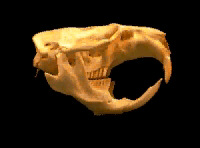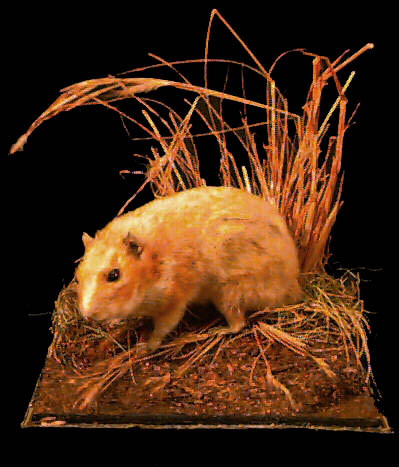
MOUSE-LIKE RODENTS
ORDER RODENTIA
SUB-ORDER SCUIROGNATHI
The 1477 species of mouse-like rodents are assigned to 312 genera in 5 families:
- Family Muridae: rats, mice, voles, musk-rat, hamsters, gerbils, harvest mice - 1303 species in 279 genera.
- Family Myoxidae: dormice - 26 species in 8 genera.
- Family Dipodidae: jerboas, jumping mice and birch mice - 50 species in 15 genera.
- Family Geomyidae: pocket gophers - 39 species in 5 genera.
- Family Heteromyidae: pocket mice and kangaroo rats - 59 species in 5 genera.
- hamsters - sub-family Cricetinae;
- gerbils - sub-family Gerbillinae;
- voles and lemmings - sub-family Arvicollinae.
Skulls and Dentition
 | Mouse-like rodents have a unique arrangement of the chewing jaw muscles and structure of the molar teeth. Both lateral and deep masseter muscles are thrust forward providing a very effective gnawing action. The deep masseter passes through the orbit (eye-socket) to the muzzle. These animals have a single pair of incisors and three cheek teeth in each half of the upper and lower jaws. The cheek teeth vary greatly in their capacity for growth and their wearing surfaces. Dental formula of a rat: I 1/1; C 0/0; P 0/0; M 3/3. |
The 'mouse' family
| The mouse family (family Muridae) is the most diverse of
all mammalian families, with over 1000 living species identifed to date.
The common mice and rats found in forests throughout the world are
probably closest to the common ancestor. Such forest animals
probably gave rise to modern specialised groups adapted
to different environments:
|
 |
The mouse-like rodents are represented in our Collections by mice, rats, the musk-rat, gerbils, dormice, hamsters, voles and a jerboa, as well as examples of plague-carrying mice, rats and gerbils from South Africa.
House Mouse |
||
Gerbils |
||






